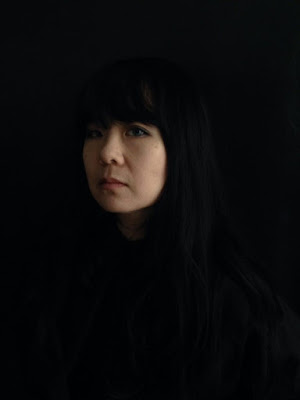 |
| Dancer Colin Dunne in his solo, Concert, given its US premiere this month at Baryshnikov Arts Center (photo: Whitney Browne) |
Concert
by Colin Dunne
Baryshnikov Arts Center
co-presented with Irish Arts Center
November 14-16
Irish step dancing might start with a bit of stomping, a bit of running, as Colin Dunne--best known as an early superstar of the Riverdance phenomenon--informed us in the casual opening of his piece, Concert. But it can claim a more expansive range than we might have ever seen or imagined. Dunne's imagination, however, remains unfettered and restless after exploring contemporary dance for nearly two decades. Furthermore, as presented in Concert, his aesthetic journey is inspired by virtuoso Irish fiddler, Tommy Potts. Potts' spirit guided and presided over this intriguing hour of solo performance.
I should put quote marks around "solo." Dunne, dressed in unglamourous running shoes and black jeans and t-shirt, might have been the only flesh-and-blood performer in BAC's space, but he was far from alone. Potts, dead since 1988, was very much in the house. We heard him speak, watched him play in a projected film and saw his eccentric artistry reflected in the thoughtful whimsy of Dunne's choices.
Like Dunne's costuming, his choice of props and sonic accompaniment tilted towards the humble and the analog, stripping away flash, getting down to the nitty gritty. There's no pretense of perfection (or restraint) in Dunne's physicality. That's the honest body of a man who has lived a while. And for equipment to invoke both history and the spirit realm, he employed a turntable spinning the LP of Potts' The Liffey Banks, his only recording. A couple of unremarkable speakers carried Potts' words. There was an upright piano that probably has seen a few years. And, for god's sake, a cassette player. With all of these, Dunne wove an atmosphere with character and authenticity and--would you believe it?--continuity.
Moveable patches of flooring, rearranged as needed, helped the dancer--sometimes barefoot, sometimes wearing heeled boots--lay down sound, some tentative and soft or bold and complex scrapes and patters with one arm or another un-traditionally free to flap out or lift in a kind of punctuation. It was impossible to be a tap dance fan and not sit there mentally pairing him with tap artists--Black ones in particular--soul to soul.
Direction: Sinéad Rushe
Composing/sound designer: Mel Mercier
Lighting: Colin Grenfell
Film design: Jeffrey Weeter
Lighting: Colin Grenfell
Film design: Jeffrey Weeter
******
DISCLAIMER: In addition to my work on InfiniteBody, I serve as Senior Curatorial Director of Gibney. The postings on this site are my own and do not necessarily reflect the views, strategies or opinions of Gibney.
******















